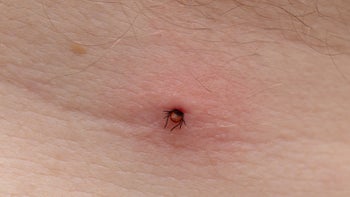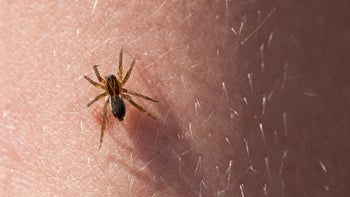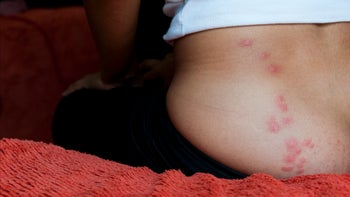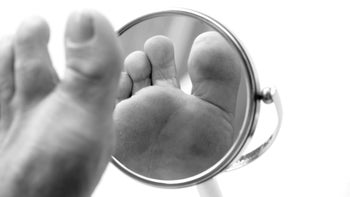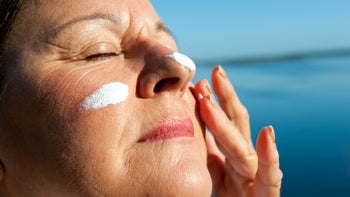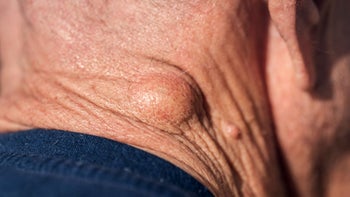
When Should You Worry About a Spider Bite? 8 Signs You Need Treatment
Key takeaways:
Most spider bites only cause mild symptoms like skin itchiness, irritation, or redness.
Sometimes, spider bites can lead to a skin infection. It can be hard to tell a skin infection and a spider bite apart.
Bites from black widow spiders, hobo spiders, and brown recluse spiders can cause serious illness.
Table of contents
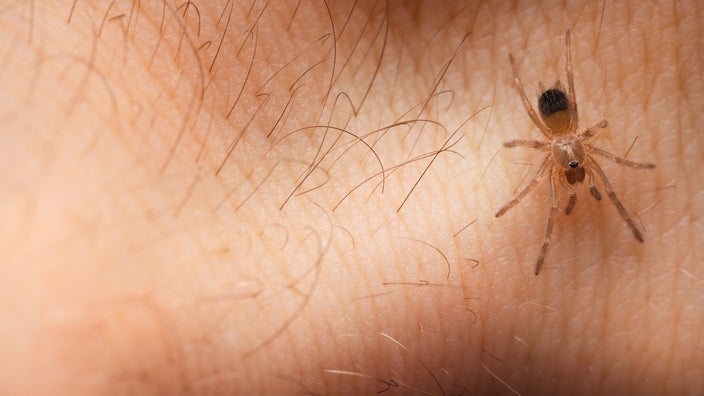
Spiders — and their bites — can be alarming. People often worry that a spider bite can be dangerous. Luckily, most spiders people encounter on a day-to-day basis aren’t poisonous. And their bites usually cause mild symptoms like skin irritation and redness.
But spider bites can get infected. And some spiders are venomous, and their bites can lead to more serious symptoms. Here’s how to tell if you need to seek care for your spider bite.
What do spider bites look like?
Spider bites can look different from person to person. Most spider bites are small and may not be very noticeable.
One Prescription + One Pump + Once a Day
Introducing CABTREO: the treatment that has clindamycin phosphate, adapalene, and benzoyl peroxide all in one topical application. Now cash pay patients pay no more than $100 using GoodRx.

In the early stages, spider bites may look like a small bump on the skin. It may also look like a small scab surrounded by a halo that’s red (in fair skin) or brown (in darker skin). Sometimes, you may even see small bite marks in the center. Usually, a spider bite goes away in 1 to 2 days.
Disclaimer: Some viewers may find several of the following images graphic or disturbing.
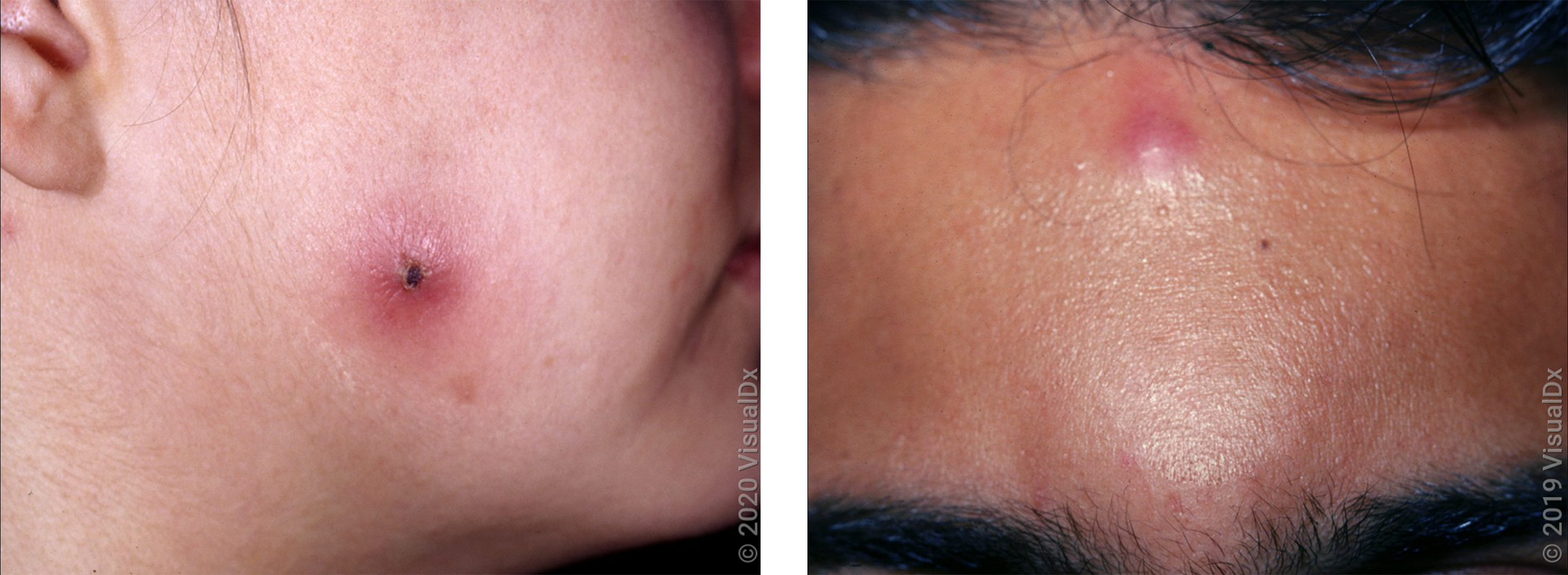
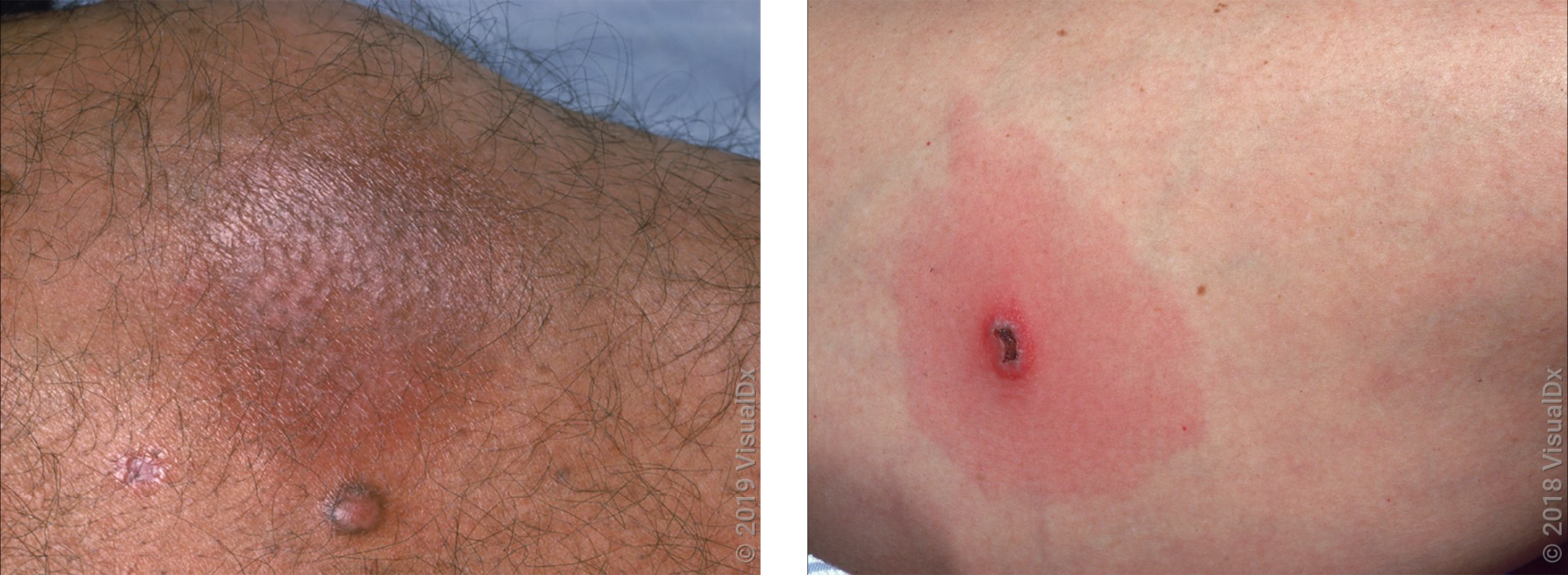
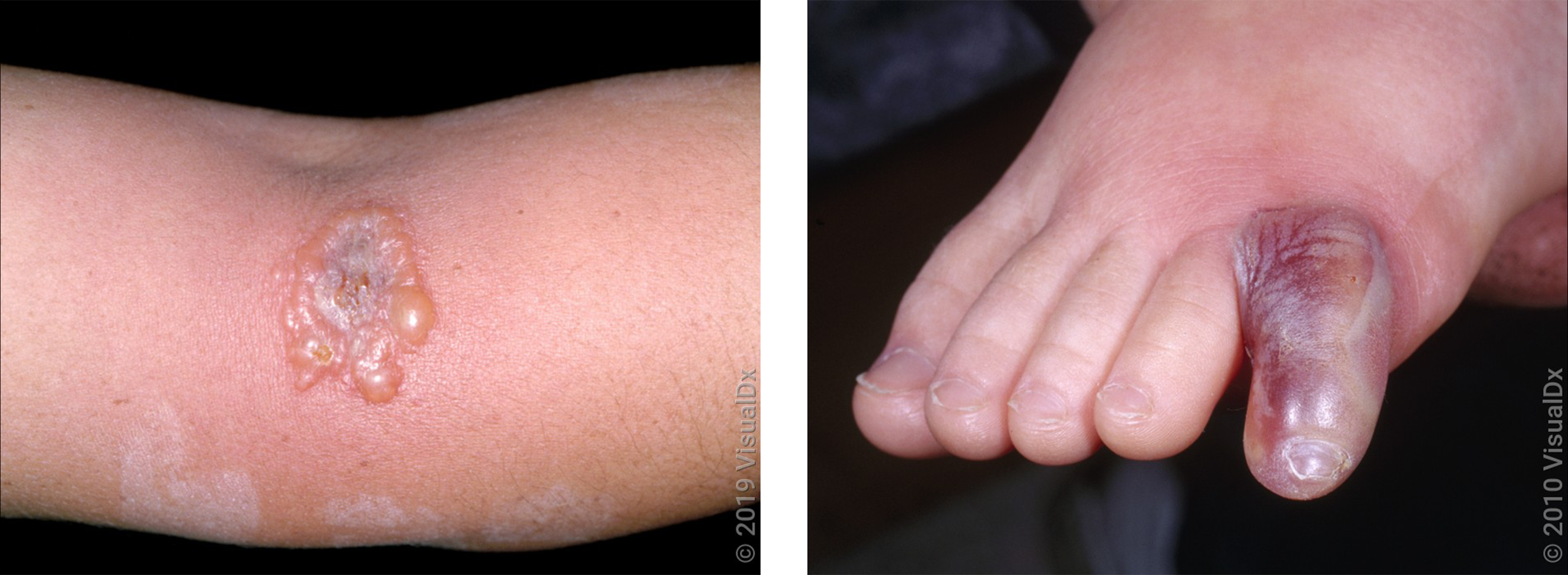
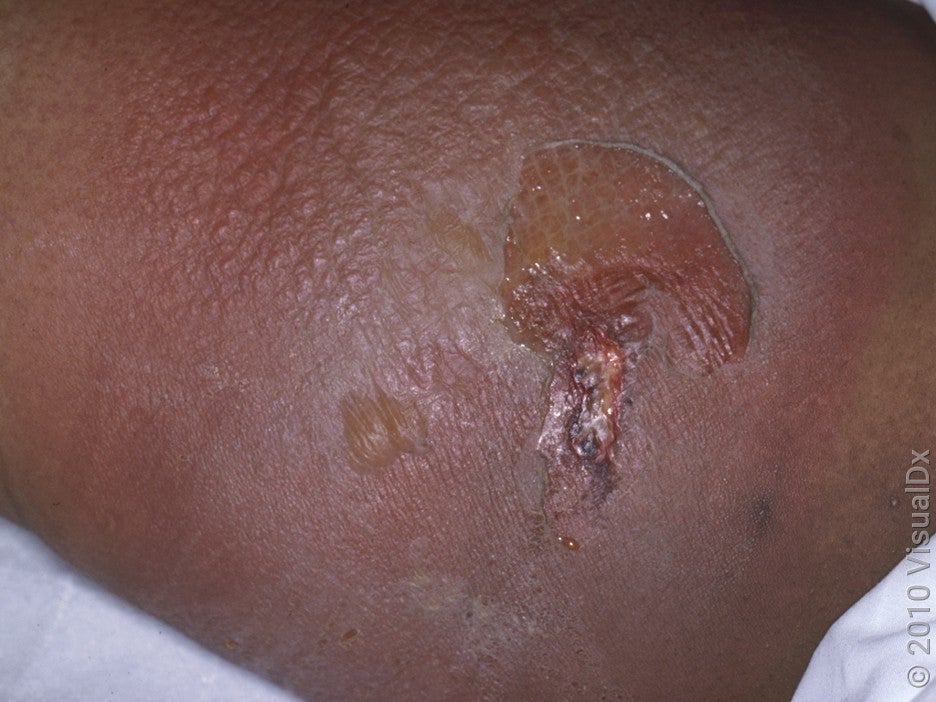
Spider bite symptoms
Non-venomous spider bites only cause mild symptoms like:
Mild skin redness
Skin irritation
Small scab
You may also notice some pain or itchiness. The symptoms are similar to what you might experience from a bee sting.
Venomous bites cause more noticeable symptoms like:
Red, purple, or brown skin blisters that can be filled with blood
Skin swelling
Skin discoloration (dark-red, violet, or brown color changes)
Sores
Pain
Itching
How to identify a spider bite: Spider bites can look different depending on the type of spider that caused them. Check out our guide to identifying spider bites.
Could it be hives? Sometimes bug bites and hives can look similar. See a few images of hives versus bug bites to learn how to spot the differences.
Find fast relief: There’s no way to get rid of bug bites overnight. But these at-home remedies can help ease the itch and discomfort.
These spider bites can take weeks or even months to get better.
When should you get medical care for a spider bite?
Most non-venomous spider bites will get better on their own in a couple of days and don’t need medical attention. But occasionally non-venomous bites can cause more serious symptoms that need medical attention. Here are eight situations when you should get medical help for a spider bite.
1. Worsening redness around the bite
Redness around your spider bite should start to fade after 2 or 3 days. Redness that doesn’t get better or starts to spread can be an early sign of a skin infection called cellulitis. You may also notice that your skin feels warm and painful to the touch. Cellulitis needs to be treated with antibiotics.
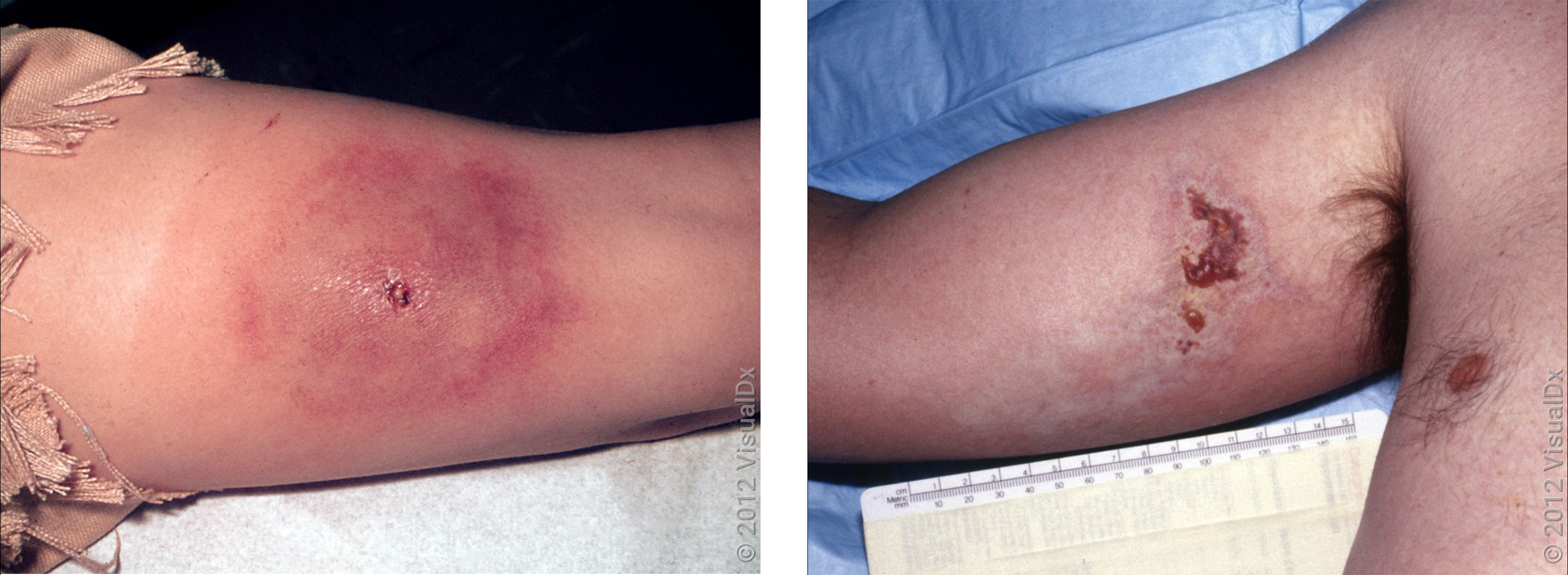
2. Black skin or open sores
The skin around or underneath the bite may turn black or develop into an open sore. This is a sign that the skin is starting to die. This needs urgent medical attention to stop it from spreading.
Read more like this
Explore these related articles, suggested for readers like you.
3. Boils (abscess)
An abscess is a pocket of pus and is often called a “boil.” It can look and feel like a large pimple. You may be able to see the white-colored pus inside or leaking out of the abscess. But if the abscess is far beneath the skin, you may feel pain from it more than you can see it. Abscesses need to be treated to relieve pain and to avoid more serious infections.
4. Fevers, chills, or body aches
Fever, chills, or body aches can be signs that you have an infection from a spider bite. If you have any of these symptoms, call your doctor’s office right away or head to the emergency room.
5. Extreme pain
Spider bites may cause some mild discomfort, but non-venomous bites shouldn’t cause extreme pain. Seek care right away if you have severe pain anywhere on your body after a spider bite. This could be a sign you were bitten by a venomous spider.
6. Nausea and vomiting
Nausea and vomiting after a spider bite is rare, but it can be a sign of a venomous bite. When a spider releases a large amount of venom and toxins, this can cause symptoms throughout the body, like nausea and vomiting, stomach pain, and muscle spasms.
Nausea and vomiting can also happen as part of an allergic reaction to a spider bite. Or it can happen as a reaction to a serious skin infection.
7. Symptoms of an allergic reaction
It’s rare, but some people can develop allergic reactions to a spider bite. Anaphylaxis is a life-threatening allergic reaction. You should seek immediate medical care or call 911 if you have symptoms of anaphylaxis like:
Hives
Swelling of the face, lips, or tongue
Voice changes
Throat itching or tightness
Cough
Trouble breathing
Wheezing
Sweating or feeling faint
Stomach pain
Nausea, vomiting, or diarrhea
8. You may have been bit by a poisonous spider
You should seek immediate medical care if you know you were bitten by a poisonous spider. You should also seek care if you didn’t see the spider that bit you but you know that venomous spiders live in the area.
Which spider bites are poisonous?
There are only a few types of poisonous spiders in the U.S:
Brown recluse spiders
Hobo spiders
Black widow spiders
Unless they’re defending themselves, these spiders don’t try to bite humans. But bites from these spiders may need prompt medical care when they happen.
When these spiders bite, they inject a toxin into the skin. The toxin in their bite causes different symptoms, depending on the type of spider. Once you’ve been bitten, you can’t draw out poison from a spider bite. The best thing to do is to wash the area, apply ice to reduce swelling, and seek medical care right away.
Some symptoms you may notice include:
Redness in light skin, or a violet or brown discoloration in darker skin
Swelling
Blistering
Skin sores
Headache
Stomach pain
Nausea and vomiting
Fever and chills
Muscle spasms
Tingling and numbness in the arms or legs
It can be impossible to tell if your bite is from a poisonous spider just by looking at it. At first, venomous and non-venomous bites may look the same. But over time, people start to develop other more serious symptoms.
How do you treat a spider bite?
Non-venomous bites can be treated at home with home-remedies like:
Cool compress to soothe warmth and swelling
Diphenhydramine (Benadryl) to ease itching
Acetaminophen (Tylenol) or ibuprofen (Motrin) to relieve pain
Venomous bites need medical attention. You may need treatment with anti-venom medications. Many people need IV medication to treat their symptoms. Some people also need a tetanus booster after a spider bite.
How can you prevent spider bites?
To prevent spider bites, avoid areas where spiders are likely to live, like wood piles, garages, and sheds. It’s also a good idea to keep these tips in mind:
Wear gloves if working in areas where spiders may be.
Keep areas around your house clear of tires, old clothes, and other junk.
Plug any openings or crevices in your house.
Check your bedding before getting into bed and your shoes and clothing before putting them on.
Use insecticide on any high-risk areas, like around wood piles and baseboards.
If a spider does get on you, brush it off. Don’t crush it.
The bottom line
Most spider bites aren’t serious. Venomous spider bites can cause more serious symptoms like severe pain, blistering, or dark discoloration at the site of the bite. But even non-venomous spider bites can also get infected. This often starts as spreading redness of the skin, warmth to the touch, or a noticeable pocket of infection. When in doubt, get medical care to see if you need treatment.
Why trust our experts?


Images used with permission from VisualDx (www.visualdx.com).
References
Centers for Disease Control and Prevention. (2024). Venomous spiders at work.
Ignite Healthwise. (2024). Preventing spider bites. MyHealth.Alberta.ca.
MedlinePlus. (2023). Spider bites.
Rahmani, F., et al. (2014). Poisonous spiders: Bites, symptoms, and treatment; an educational review. Emergency.






